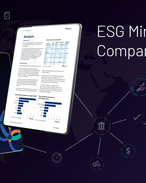The country’s energy minister, Ben Micah, headed to Japan to push for local downstream processing for the Total-operated Papua LNG project.
Micah, formerly chief of staff to Prime Minister Peter O’Neill, told journalists before departing for Japan on his first official trip overseas as petroleum and energy minister that he would be meeting this week with the country’s existing business partners and potential new investors in the Land of the Rising Sun.
“I am going to tell Japanese buyers of LNG … I’m going to tell Japanese companies who have expressed interest to establish downstream processing industries in Papua New Guinea using our domestic gas, that there is enough gas in our country for both export and domestic processing, for requirements of power and also other value-added products such as methanol, fertilizers and other by-products that need to be downstream-processed in our country,” local media reported him as saying.
“I will be meeting very large Japanese companies like Sojitz and others and a consortium of the largest power-producing companies including Tokyo Power and other potential investors interested in investing in LNG upstream as well as buying gas and in downstream processing of our gas products.”
From Japan, it was then onto Singapore for the LNG Supplies for Asian Markets conference, which concludes today, where Micah will said he would be “talking up PNG’s emerging reputation as a reliable supplier of energy”
In doing so, he said the government would be looking to expand its LNG market into emerging markets in Asia, including Malaysia and Indonesia, which Douglas Westwood believes will feature heavily as liquefaction spend will account for 11% of the region’s total spend out to 2020.
PNG LNG operator ExxonMobil is working towards making final investment decision on the third train of PNG LNG by late next year, while French super-major Total also plans on taking FID on Papua LNG in 2017.
The market – and the PNG government – is waiting on the results of appraisal activities in and around the P’nyang gas field 120km northwest of Hides in the Western Province which was discovered in 1990.
Oil Search has talked about bringing PNG LNG and Papua LNG within the same fence as a minimum, and GMP Securities’ oil and gas analyst Scott Simpson told Energy News that PNG LNG’s existing pipeline, storage and jetty facilities reportedly had sufficient capacity for up to 3.7 trains.
Therefore, Simpson reasoned, Train 3 would benefit from some major cost savings at a downstream level.
As an Australian company, Oil Search would be acutely aware of the cost blowouts incurred by the three CSG to LNG projects on Australia’s east coast, which could have been brought together in more ways than those which have appeared as something of an afterthought, despite numerous analysts suggesting it when they were first proposed.
Simpson said PNG’s government would “definitely like to see some cooperation” on the country’s two big LNG projects, and the analyst believes the first step in that would be to bring the site within the fenced-off area where PNG LNG Trains 1, 2 and 3 will be.
“There are synergies straight away from bringing it geographically next door – not least of which will be capital expenditure savings,” Simpson said.
“The next step would be bringing them together commercially, where there would be substantial savings on having a combined downstream asset.”
Oil Search, which bought into Papua LNG on the basis of around 5.5Tcf, announced this week it’s now in the process of a resources assessment on the back of the completion of Antelope-6.
The results will be known in about three months, and Simpson said that while the belief is that it will come up to between 5-7Tcf, many say it will be at the upper end and potentially higher.
The third and perhaps final course of action in terms of overall consolidation, Simpson says, is to bring Papua LNG in line with the PNG LNG joint venture in terms of project participants, which means someone like Oil Search or another bigger JV partner taking over InterOil.
Australian Securities Exchange-listed Oil Search currently has a market capitalisation of $A10.476 billion, while New York-listed InterOil’s is $US1.447 billion ($A1.94 billion).
“That would be the next step in bringing it all together as a development,” Simpson said.
“InterOil is an acquisition target for sure for Oil Search.”
If Papua LNG is two-train that would be optimum, and while Oil Search has been a bit more conservative, the appraisal results so far have been pretty positive.
“The latest drilling report from Oil Search out last month indicated that Antelope-6 had come in in line with expectations, then there was another extended production test done over Antelope-5 looking at communication across the reservoir, and it showed there was no compartmentalisation on fracturing the reservoir, so there should be a simple development and good flow rates,” Simpson said.
While PNG LNG and Papua LNG are two independent projects, ExxonMobil is still proceeding down the path of an expansion of PNG LNG which is reliant on the results from the P’nyang appraisal.
Recent resource upgrade Oil Search put out saw an increase in resources on P’nyang on the back of seismic interpretation, so that’s positive, but we’re waiting for the results of the Moorook exploration well and the P’nyang South appraisal well.
The analyst said that while Papua LNG will be a stand-alone facility there could still be sharing of some infrastructure.
“You’re still going to need to build your own plants, storage, they could potentially use the jetty and expand the facility, but the main capex items are all stand-alone items,” he said.
PNG has long desired to develop a petrochemical sector.
In 2013 Sojitz and PNG signed a memorandum of understanding for a feasibility study on a gas chemical project to produce methanol, ammonia and dimethyl ether.
Mitsubishi and Itochu Corporation had also decided to develop industrial chemicals in PNG that could see them invest $US1 billion.
























